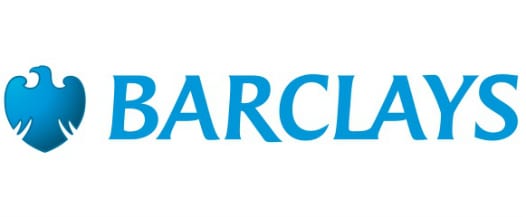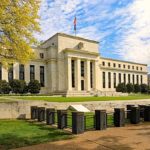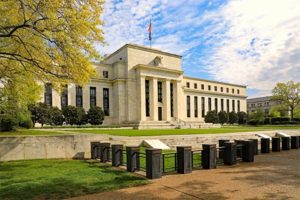Class-Action Lawsuit Names 12 Banks Allegedly Involved in Illegally Altering Interest Rates
Annie Bell Adams may have recently lost her house to foreclosure but she’s fighting back.
The 65-year-old pensioner is currently leading a class-action suit in New York against a dozen of the world’s largest banks for their alleged participation in the manipulation of the London Interbank Offered Rate (Libor) rate.
Adams’ lawsuit contends the Libor rate was raised artificially on the first day of the month, when her adjustable-rate mortgage rate was recalculated, thereby making her subprime loan payments substantially higher between 2000 and 2009.
The Libor is the average interest rate at which international banks borrow from each other. It is calculated using major banks in London and is controlled by the British Bankers’ Association (BBA).
The Beginning of the Libor Scandal
The Libor scandal broke in June 2012 when British bank Barclays agreed to a $450 million settlement. This was in response to accusations by both British and American authorities that it manipulated the Libor rates. Questions are now being raised to why regulators did not put an immediate stop to the practice since evidence showed the Bank of England and the Federal Reserve of New York were both allegedly aware of the practice.
Since American financial institutions typically reference the Libor to set financial derivatives, mortgages and student loans, any manipulation of those rates can greatly impact a borrower’s payment. It is the standard for $300 trillion of securities and loans.
Adams, along with her four co-lead plaintiffs, has filed a class-action lawsuit against 12 banks, including: Citigroup Inc., HSBC Holdings Plc, Rabobank International Holdings BV, Credit Suisse Group AG, Deutsche Bank AG, Lloyds Banking Group Plc and Royal Bank of Canada.
The alleged artificial increase in Libor allowed banks to raise the interest rates on adjustable-rate loans. Since most adjustable-rate mortgages use the first of the month to reset rates, a manipulation of rates on that day would result in higher mortgage payments for countless people.
Altered Libor Rates and their Effects
The lawsuit claims statistical analysis showed the Libor numbers consistently moved by 7.5 basis points on reset days between 2007 and 2009.
According to the Office of the Comptroller of the Currency, there were at least 900,000 outstanding home loans indexed to Libor originating from 2005 to 2009. The unpaid principal balance was $275 billion.
According to the lawsuit, the banks unjustly “enriched themselves” by manipulating the rate and thereby raising payments for homeowners with adjustable-rate loans and increase profits.
The complaint referenced traders’ emails published during the Barclays settlement. In one, the trader openly asked for a higher Libor rate because “We’re getting killed on our [three-month] resets.”
The plaintiffs, according to attorney John Sharbrough, have each lost thousands of dollars because of this manipulation of rates. The Financial Times estimates as many as 100,000 plaintiffs will join in on the lawsuit. Libor manipulation claim lawsuits have been grouped together under one judge in the Southern District of New York. The banks have requested a hearing to dismiss the claims.
As a result of the scandal, the Serious Fraud Office of Britain may pursue criminal prosecutions, and the United States Department of Justice’s criminal division is building cases against multiple financial institutions.
Insider dealing, the rigging or manipulation of benchmarks such as Libor, was deemed illegal as of last week. Backed by an influential European Parliament committee, traders who violate this new regulation could be sent to jail for a minimum five years. Less serious offenses would be eligible for a minimum two year sentence.
Traders outside of Europe suspected of similar crimes could face extradition, as long as regulators are willing to cooperate.
Sources:
- Binham, C. (2012, October 14). US woman takes on banks over Libor. Financial Times Retrieved from http://www.ft.com/intl/cms/s/0/6b912248-1496-11e2-8cf2-00144feabdc0.html#axzz29O1bltxt
- New York Times. (2012, September 25). Libor (Barclays Interest Rate Manipulation Case). Retrieved from http://topics.nytimes.com/top/reference/timestopics/subjects/l/london_interbank_offered_rate_libor/index.html
- Wrenn, E. (2012, October 15). U.S. pensioner who had her house repossessed in credit crunch launches class action against 12 banks for 'rigging mortgage rates in Libor scandal. Daily Mail. Retrieved from http://www.dailymail.co.uk/news/article-2217963/American-woman-house-repossessed-launches-class-action-12-banks-rigging-mortgage-rates-Libor-scandal.html
- Reuters. (2012, October 9). EU Lawmakers Back Jail for Interest Rate Riggers. Retrieved from http://www.nytimes.com/reuters/2012/10/09/business/09reuters-eu-markets-libor.html?ref=londoninterbankofferedratelibor&_r=0


















